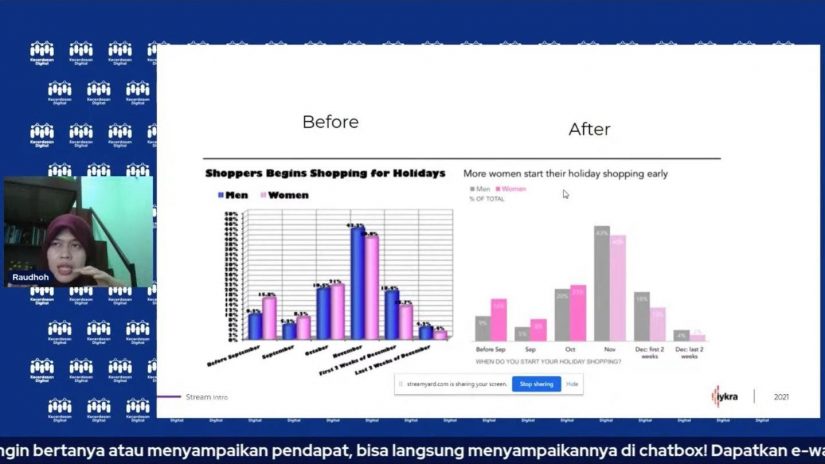
The purpose of data visualization is to group relevant information close together and separate the less relevant information so that readers can analyze it easily.
In addition, visualization is also useful to see the relationship between variables that influence each other. The existence of visualization makes the reader understand the story behind the data because the selection of the right visualization can compose the story so that it is easy for readers to understand. In this case, visualization emphasizes the element of simplicity rather than beauty in its use.
“In data visualization, what is very important is how we package information in a simple and light on the eye, avoid using flashy colors and dense information,” Raudhoh said.
Furthermore, Raudhoh explained that when we fail to create an effective and easy-to-understand visualization, it means that we are failing to convey the information in it. Meanwhile, to find out whether a visualization is good or not, it only takes 10 seconds to consume the information in it.
Meanwhile, the basic logic that must be possessed when visualizing data is to understand the concept of pivot tables in Ms. Excel. When we are good at distinguishing categorical and numeric variables in pivot tables, it will be easy to use other visualization tools, such as Google Data Studio, Tableau, and PowerBI.
“Before entering into ‘fancy’ visualization tools like the ones on this screen, I highly recommend that you master the pivot table first,” Raudhoh said.
At the end of the presentation, Raudhoh shared tips on creating data visualizations, one of which was decluttering or removing noise from visual data. Some things that need to be done are removing gridlines, not using 3D, cleaning axis labels, and removing markers data. As for we should make the x-axis horizontal, use consistent color and font size, and emphasize points with different titles or colors.
